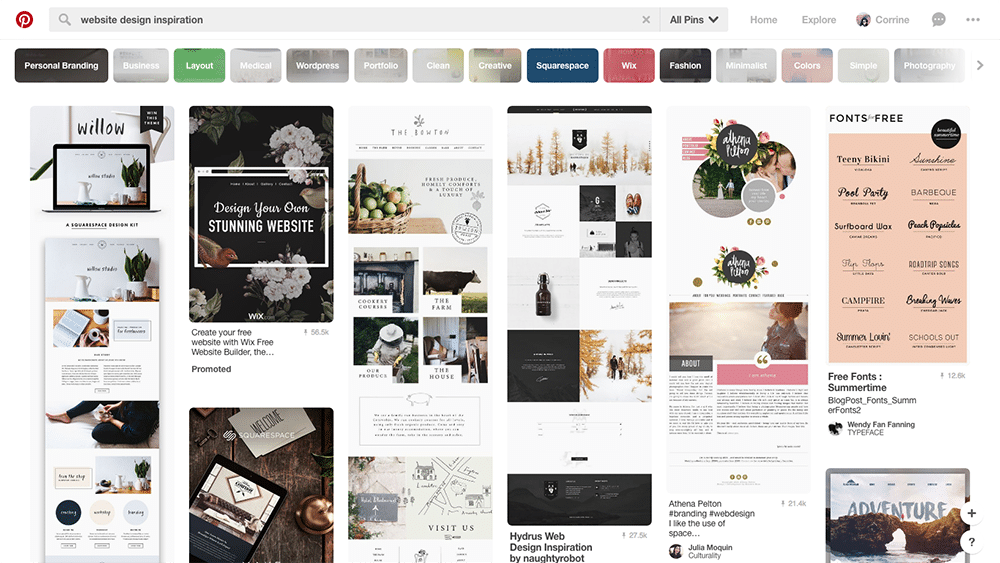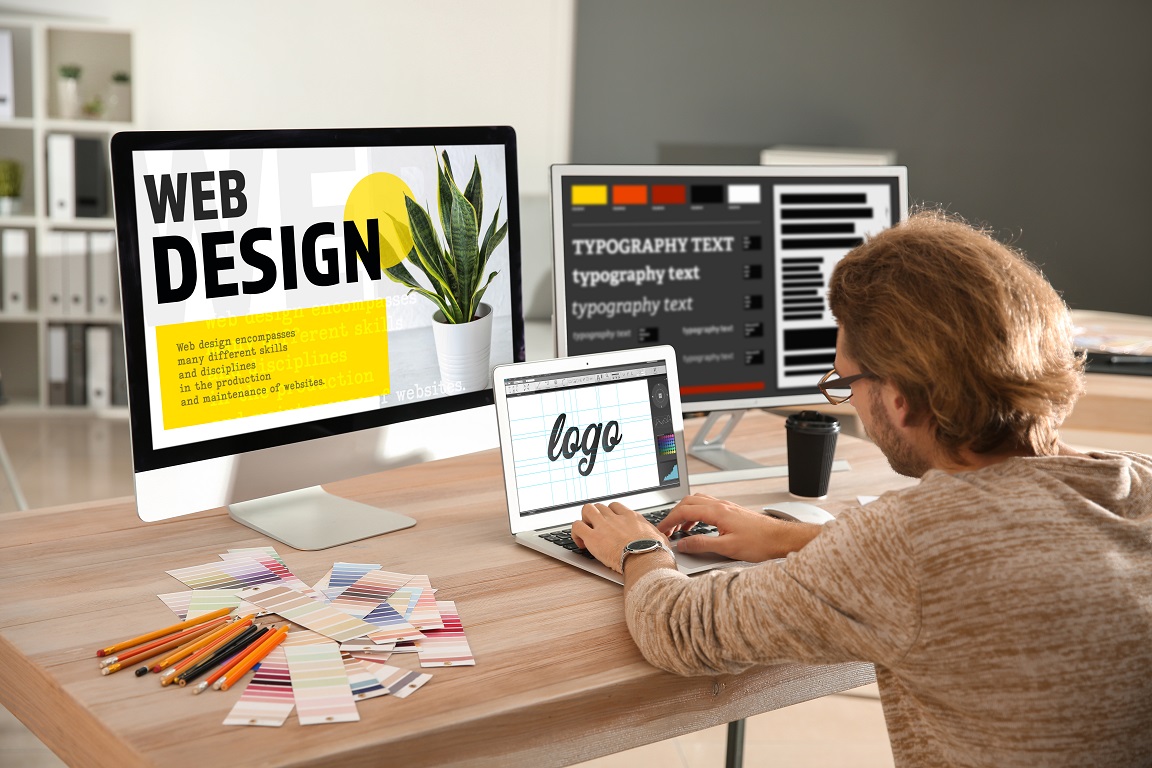Discovering the Effect of Receptive Web Layout on Access and Individual Complete Satisfaction Throughout Various Gadgets
The introduction of receptive website design (RWD) has actually transformed the electronic landscape, specifically in boosting accessibility and customer satisfaction throughout a plethora of tools. By employing flexible interfaces and adaptable designs, RWD not just deals with varied individual needs but likewise deals with the critical value of inclusivity in web experiences. As we take a look at the nuanced interplay in between RWD, mobile web traffic, and customer engagement, it becomes vital to take into consideration how these components collectively affect general internet site efficiency. What effects does this have for future layout methods and individual assumptions?
Definition of Receptive Internet Layout

The core concept of RWD is to supply an optimal viewing experience, which consists of simple reading and navigating without the demand for excessive resizing or scrolling. This adaptability is important in a digital landscape where customers access info with numerous gadgets with differing display resolutions. RWD not only improves usability yet likewise improves load times, as it generally employs a single codebase to offer several gadgets, lowering the demand for different mobile websites.
Ultimately, Responsive Web Style aims to create a engaging and natural customer experience, making certain that content is visually attractive and functionally effective, no matter the tool being made use of. This adaptability is crucial in fulfilling the varied needs of today's web individuals, cultivating engagement and satisfaction across systems.
Relevance of Ease Of Access
Exactly how can we make certain that all individuals, despite their capacities, can involve with internet content properly? Ease of access in web design is of vital relevance, as it fosters inclusivity and guarantees equal access to details for people with disabilities. This incorporates visual, acoustic, and cognitive disabilities, calling for designers to take into consideration varied individual needs.

By focusing on accessibility, organizations not just comply with legal demands yet additionally boost their brand name online reputation, showing a commitment to social responsibility. In addition, available internet sites typically cause enhanced usability for all users, as functions made for inclusivity can profit a wider audience.
Ultimately, the importance of access transcends plain compliance; it has to do with creating an electronic atmosphere where every individual can navigate, comprehend, and engage with content efficiently, therefore improving the general web experience for every person.

User Fulfillment Across Devices
Numerous individuals anticipate a smooth experience when accessing web material throughout numerous devices, from browse around these guys desktops to mobile phones. This expectation is rooted in the raising diversity of devices and display sizes readily available today. Responsive website design (RWD) plays a vital duty in satisfying these assumptions by making certain that internet sites adjust fluidly to different screen settings.
User complete satisfaction is substantially affected by the access and usability of a web site. When customers can quickly browse, read, and communicate with material no matter the tool they are making use of, their overall complete satisfaction rises. A well-implemented responsive layout reduces the requirement for zooming or horizontal scrolling, which can annoy users and lead to greater bounce rates.
Moreover, individual satisfaction is additionally impacted by elements such as filling speed and aesthetic appeal. RWD strategies that optimize images and improve code can enhance performance, consequently adding to a much more delightful individual experience. As users engage with material that is customized to their device, they are more probable to spend time on the website, return for future sees, and advise it to others. Ultimately, responsive internet style cultivates a favorable relationship between customers and web content throughout tools.

Effect On Mobile Users
Over 54% of global web website traffic now stems from mobile phones, highlighting the crucial relevance of optimizing web experiences for this customer base. Receptive internet layout (RWD) plays a crucial function in boosting access and customer complete satisfaction for mobile customers. By adapting design, images, and functionalities to various screen dimensions, RWD guarantees that web content is not just visually enticing but additionally conveniently navigable, despite the device made use of.
The effect of RWD on mobile customers prolongs beyond aesthetics; it considerably affects usability. A properly designed receptive website lowers the demand for excessive scrolling and zooming, assisting in a more instinctive interaction. It promotes inclusivity by accommodating users with varying capacities, guaranteeing that those that depend on mobile tools can access details with convenience.
In addition, mobile individuals gain from much faster loading times, as RWD maximizes resources based on device abilities - web design. This performance is critical, as mobile users typically look for fast information and may desert sites that stop working to load immediately. Eventually, the integration of receptive web style is crucial for fulfilling the diverse demands of mobile customers, boosting their general experience and encouraging ongoing involvement with the web content
Ideal Practices for Execution
Applying responsive website design (RWD) efficiently calls for adherence to several best methods that make certain optimal efficiency throughout tools. Initially, using a liquid grid design is essential; this permits components to resize proportionally based on the display measurements, offering a smooth experience. Furthermore, using flexible images makes sure that visuals scale correctly without shedding high quality or creating format problems.
Next, executing media questions is vital for using different styles based on gadget characteristics. These questions make it possible for developers to customize the user experience for details resolutions, improving use and availability. Additionally, focusing on mobile-first layout can lead to far better efficiency by more initially concentrating on the smallest displays and gradually improving the experience for larger devices.
It is also necessary to consistently evaluate the site throughout various platforms and tools to recognize prospective usability issues. Tools such as browser developer tools and responsive layout screening services can assist in this process. Lastly, making sure that all interactive elements are touch-friendly and enhancing web page lots times substantially add to user complete satisfaction and access. By adhering to these finest methods, companies can create a robust and obtainable internet existence that fulfills the varied needs of customers throughout different tools.
Conclusion
In conclusion, responsive web layout plays a vital duty in enhancing accessibility and user satisfaction throughout diverse gadgets. Eventually, the assimilation of finest methods in responsive style fosters inclusivity, minimizes bounce prices, and promotes better individual involvement.
The emergence of responsive web design (RWD) has changed the electronic landscape, especially in enhancing access and customer satisfaction throughout a multitude of gadgets.Receptive Web Style (RWD) changes the customer experience across numerous devices by making sure that internet material adapts fluidly to different screen dimensions and alignments. Inevitably, responsive web style fosters a positive relationship between users and web content throughout tools.
Over 54% of worldwide web website traffic currently stems from mobile gadgets, highlighting the vital relevance of maximizing internet experiences for this customer base. Responsive internet style (RWD) plays a crucial role Bonuses in improving accessibility and individual complete satisfaction for mobile users.